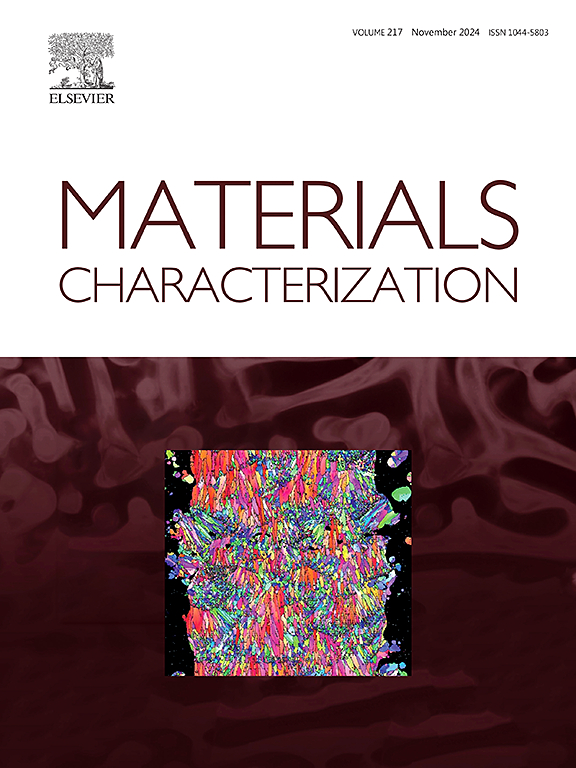Breaking strength-conductivity trade-off in nanotwinned Cu by Fe Co-electroplating and its thermal stability characterization
IF 4.8
2区 材料科学
Q1 MATERIALS SCIENCE, CHARACTERIZATION & TESTING
引用次数: 0
Abstract
Traditional metal alloying usually offers enhanced strength but generally reduces the conductivity. In this study, we prove that incorporating Fe ions can break the strength conductivity trade-off in electroplated nanotwinned copper (NT-Cu) foils. An enhancement of 13 %, from 758.6 MPa to 862.5 MPa was achieved. The microstructure, twin spacing, grain size, and orientation of the foils were analyzed using focused ion beam, transmission electron microscope, and electron backscattered diffraction. Additionally, linear sweep voltammetry analysis was performed to investigate the inhibitory effects of Fe ions. Results show that the strength-conductivity synergy is due to the grain/twin spacing refinement effect of Fe ions in the electrolyte. The presence of Fe ions suppresses the growth of Cu foils and increases the reduction overpotential leading to higher nucleus density (more nucleation sites during the initial stages of electrodeposition). Fe ions further refine the equiaxed grain structure producing ultrafine grains while preserving nanotwins within the Cu grains. The electroplated NT-Cu(Fe) foils also demonstrated good thermal stability and high electrical conductivity (85.4 %, international annealed Cu standard-IACS). This technique could widen new avenues for the development of the next generation of electrical interconnects.
求助全文
约1分钟内获得全文
求助全文
来源期刊

Materials Characterization
工程技术-材料科学:表征与测试
CiteScore
7.60
自引率
8.50%
发文量
746
审稿时长
36 days
期刊介绍:
Materials Characterization features original articles and state-of-the-art reviews on theoretical and practical aspects of the structure and behaviour of materials.
The Journal focuses on all characterization techniques, including all forms of microscopy (light, electron, acoustic, etc.,) and analysis (especially microanalysis and surface analytical techniques). Developments in both this wide range of techniques and their application to the quantification of the microstructure of materials are essential facets of the Journal.
The Journal provides the Materials Scientist/Engineer with up-to-date information on many types of materials with an underlying theme of explaining the behavior of materials using novel approaches. Materials covered by the journal include:
Metals & Alloys
Ceramics
Nanomaterials
Biomedical materials
Optical materials
Composites
Natural Materials.
 求助内容:
求助内容: 应助结果提醒方式:
应助结果提醒方式:


